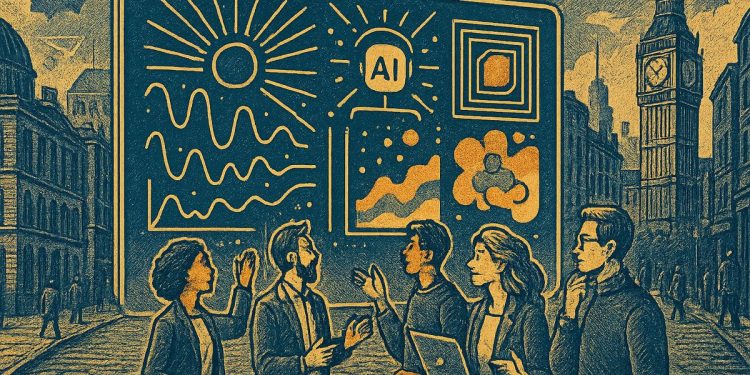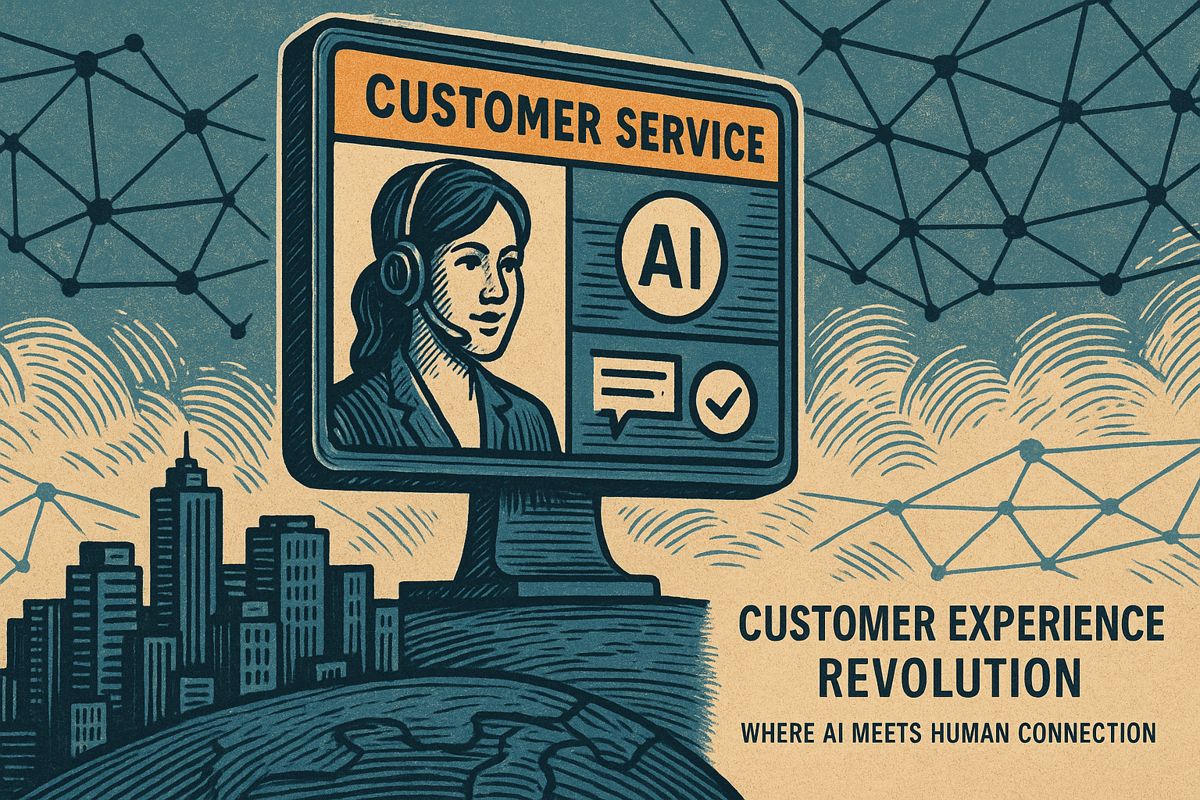Vibe coding is a new AI-powered way for brands to create marketing that feels real and personal, matching people’s emotions and current trends. In 2025, teams use vibe coding to make eye-catching ads and messages super fast, cutting down creative work by 80%. Instead of just looking at age or income, it focuses on what makes people feel, like cultural moments or values. Brands keep things safe with new rules to protect privacy and prevent bias. Overall, vibe coding helps even small teams make marketing that feels big and truly connects with people.
What is vibe coding and how is it transforming marketing in 2025?
Vibe coding is an AI-driven approach in 2025 that lets brands rapidly create marketing campaigns tailored to emotions, cultural trends, and personal psychology. It enables teams to scale authentic messaging, reduce creative overhead by 80%, and personalize content faster and more meaningfully than ever before.
Vibe Coding in 2025: The Quiet Revolution Reshaping How Brands Speak to You
In the first quarter of 2025, the term “vibe coding” leapt from a niche tweet by former Tesla AI lead Andrej Karpathy into boardrooms and brand playbooks worldwide. What began as a tongue-in-cheek description of AI-assisted programming is now the engine behind how companies scale authentic emotion, cultural nuance, and personal storytelling – without losing their human soul. Below, we unpack the shift in plain language, with numbers and guardrails every marketer should keep in mind.
How We Got Here: From Pull Requests to Pull-Heartstrings
- February 2025: Karpathy posts a 280-character definition of “vibe coding” on X, coining the phrase now cited in Merriam-Webster’s 2025 trending list.
- March–June 2025: Marketing teams borrow the playbook, rebranding it “vibe marketing” and pairing generative AI with psychological audience data.
- *Impact: * Campaign cycles that once took 4–6 weeks now ship in 72 hours, according to a Seer Interactive audit of 312 brands.
What Vibe Coding Actually Looks Like on the Inside
| Human Role | AI Role | Output |
|---|---|---|
| Sets emotional objective (“feel like a rooftop sunset in Lisbon”) | Analyzes 2.4 M data points on color, sound, slang preferences | Generates 27 headline variants, 15 hero images, 3 TikTok scripts |
| Approves tone and brand guardrails | Continuously A/B tests in real time | Retires under-performing assets within 15 min |
Teams using this loop report 20× faster execution and 80 % lower creative overhead, per Landbase VibeGTM benchmarks.
The Psychology Layer: Why Demographics Alone Miss the Mark
Traditional segments (age, income, zip code) capture only 48 % of purchase intent variance, according to a 2025 Solsten analysis. Vibe coding flips the script by prioritizing:
- Cultural currents (micro-communities, memes, aesthetic codes)
- Emotional triggers (risk tolerance, nostalgia index, dopamine response patterns)
- Value alignment (sustainability stance, creator economy affinity)
Tools like IBM Watson Customer Analyzer and Dynamic Yield ingest social, search, and zero-party data to assign each user a “psychographic heat map” updated hourly.
The Ethics Checklist Every Brand Keeps in 2025
- Consent Layer: Opt-in data use, granular toggles for psychological profiling.
- *Explainability: * Ads carry 1-click disclosures – “Why am I seeing this?”
- Bias Audit: Mandatory quarterly reviews for demographic skew (>5 % deviation triggers re-training).
- Human Override: Creative director can freeze any asset within 10 minutes of detection.
The IAPP 2025 framework credits these four steps with reducing consumer opt-out rates by 34 % year-over-year.
Small-Team, Big-Brand Proof Points
- *Glossier * (beauty): 9-person “vibe squad” runs 50 % of global campaigns.
- *Oatly * (food): Used vibe coding to localize tone for 11 languages in 8 days.
- *Notion * (productivity): Saw 2.1× ROAS after swapping persona-based ads for psychographic vibes.
Quick Start Scenarios
| Scenario | Input Prompt (Human) | AI Sample Output |
|---|---|---|
| Launching sustainable sneakers | “Make Gen Z feel heroic about re-commerce” | AR filter lets users “revive” old kicks into new colorways |
| B2B SaaS webinar invite | “Sound like the smartest friend at the coffee bar” | Slack-style emoji deck + 200-word preview that reads like gossip, not specs |
Watch-Outs for 2025
- Platform Fatigue: Over-personalization can spike opt-outs; rotate vibe every 4–6 weeks.
- Regulation Radar: EU’s AI Act “high-risk” list may include psychological micro-targeting by Q4 2025.
- Data Decay: Emotional signals shift 30 % faster in Gen Alpha than Gen Z; refresh datasets monthly.
Vibe coding is less about robots replacing marketers and more about giving small teams the superpower of global resonance. The brands winning 2025 are the ones that remember emotion is the code – and guard it accordingly.
What exactly is “vibe coding” in the context of marketing?
Vibe coding is a 2025-born approach that hands creative direction to people and execution to AI. Instead of asking “How do we target 25-34-year-old urban parents?”, teams now ask “What emotional wavelength does this audience live on?” Brands then give employees permission (and AI tools) to express their authentic voice at scale while staying aligned to that shared wavelength. The result is content that feels personal, not programmatic, and campaigns that shift from demographic buckets to value-and-aesthetic tribes.
How does it differ from classic persona or demographic targeting?
Traditional marketing slices audiences by age, income or zip code. Vibe coding ignores those lines and maps emotional currents: shared values, cultural signals and aesthetic preferences. In 2025 survey data, 61 % of Gen-Z respondents said they identify with three or more sub-cultures simultaneously, making rigid personas obsolete. Psychological segmentation tools such as Elaris, Adobe Experience Platform and IBM Watson Customer Analyzer now profile audiences on motivations and mood rather than census data, producing campaigns that resonate even when the “who” keeps changing.
What internal roles and workflows make vibe coding work?
Successful programs follow a two-tier structure:
- Strategy Layer – small squad defines the “vibe brief”: core emotional palette, acceptable risk, brand guardrails.
- Amplification Layer – employees, creators and AI agents generate assets inside those rails.
AI handles repetitive or data-heavy tasks (A/B variants, channel formatting, performance optimisation) while humans own creative intent. A 2025 Seer Interactive benchmark shows 80 % faster campaign turnaround and up to 20× execution speed in teams that adopted this split, without inflating headcount.
Which ethical guidelines should brands follow today?
Best-practice frameworks released in 2025 focus on transparency, autonomy and privacy:
- Disclose AI use in every touchpoint (required by pending EU AI Act amendments).
- Seek explicit consent for psychological data collection and offer one-click opt-outs.
- Run quarterly bias audits of targeting models.
- Keep a human in the loop for final creative approval to avoid manipulative messaging.
Zappi’s 2025 marketer survey found that brands publishing their AI ethics policy saw a 23 % lift in stated consumer trust versus those that stayed quiet.
What results can marketers expect in the first 90 days?
Early adopters report three quick wins:
- Reach: Psychological look-alike audiences deliver 30-50 % lower CPMs compared with interest-based targeting.
- Engagement: Emotional-aligned creatives show 2-3× higher click-through rates.
- Team efficiency: Lean squads (3-5 people) can now run campaigns that used to require 15-plus staff, thanks to AI summarising insights, drafting copy and auto-optimising spend.
Within a quarter, most teams evolve from testing “vibe pilots” to embedding the method across always-on channels, freeing strategists to focus on higher-order storytelling rather than asset grunt work.



















